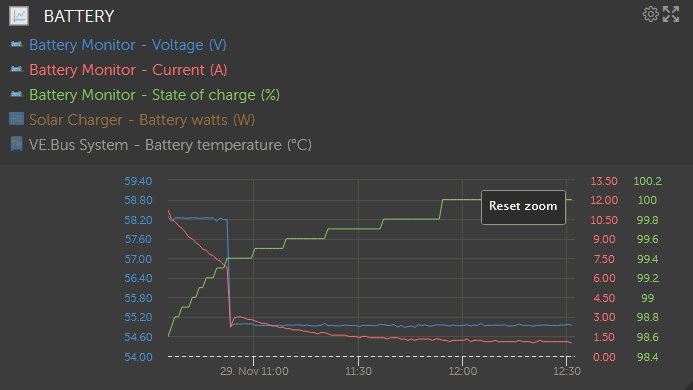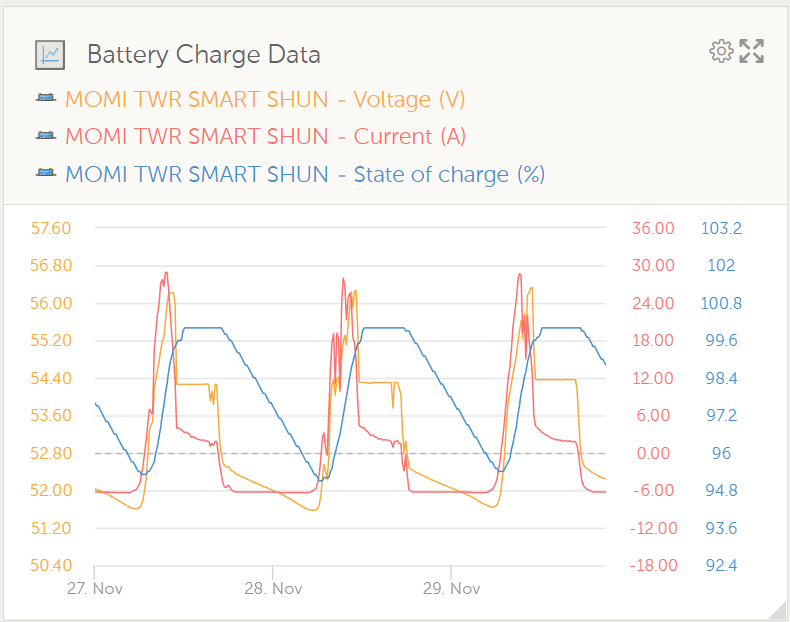Hi All,
I'm running an off-grid system using MultiplusII/48/3000 with a Cerebo GX, MPPT/250/100 VE.Can rev2, SmartShunt 500A all connected with VE.Can. My battery setup is 20x 250A 12v Gel batteries in 48v with 3 battery balancers.
On the Multiplus AC input we have a 7.5Kw generator that we've configured to start when GX relay is turned on. We want to use the generator on cloudy days top up the batteries while briefly running our critical load.
When we start the generator and the Multi accepts the input, we see the system taking over 1000W from the gen to supply load and help charge the batteries alongside the MPPT250/100 as we expect. However, after less than 2 minutes, the load on the generator starts to drop in a very controlled fashion. It appears that either Multi or another device is limiting the generator input for charging, even when the MPPT is clearly still in bulk and the batteries need charging. This makes us very nervous about when bad weather will come and we'll be reliant on the generator charging the batteries.
We have not enabled DVCC yet for this install as we're not entirely confident about its impacts with our setup and running these Gel batteries. We also have issues with the Smartshunt's tail current settings not being able to set the % value below 0.5%. Given we're running over 1000Ah storage capacity, a tail current value of 0.5% is still 50A! We'd need either an Amp value or 0.05% to get to a more normal 5-7A tail current setting. I believe this results in our batteries always showing 100% as soon as the MPPT's start charging in the mornings.
We suspect it may be the tail current setting with battery SOC always being at 100%, but we are unsure this is why the Multi is not using the generator for proper sustained charging along with the MPPT. Perhaps because we're not using DVCC and this will help with global control of all the devices working together?
Attached some pictures showing setup and generator on but not charging. When MPPT is on, it give charge to battery. When MPPT is off, generator still doesnt charge.
Gen with MPPT.jpg
Gen without mppt.jpg
Smartshunt settings.jpg
Multiplus settings 2.png
Multiplus settings 3.png
Multiplus settings 4.png
Multiplus settings 5.png
Multiplus settings 6.png
physical setup.jpg

 Dropped to Float at 7A (mppt setting, & DVCC) at 99.4% SOC. Synced at 99.8%, but almost 99.9%. I'm happy with that, but to retain such accuracy I might tweak CE and Tail seasonally for lower winter batt temps, shorter days, and a deeper batt drawdown.
Dropped to Float at 7A (mppt setting, & DVCC) at 99.4% SOC. Synced at 99.8%, but almost 99.9%. I'm happy with that, but to retain such accuracy I might tweak CE and Tail seasonally for lower winter batt temps, shorter days, and a deeper batt drawdown.